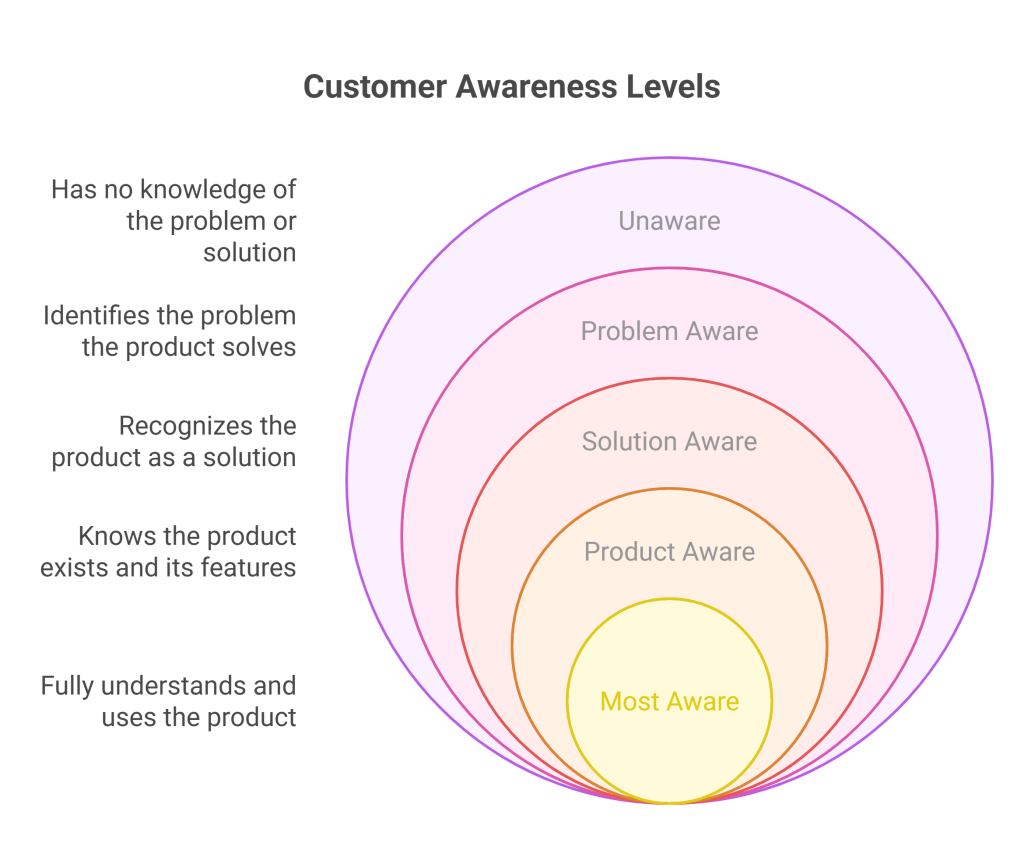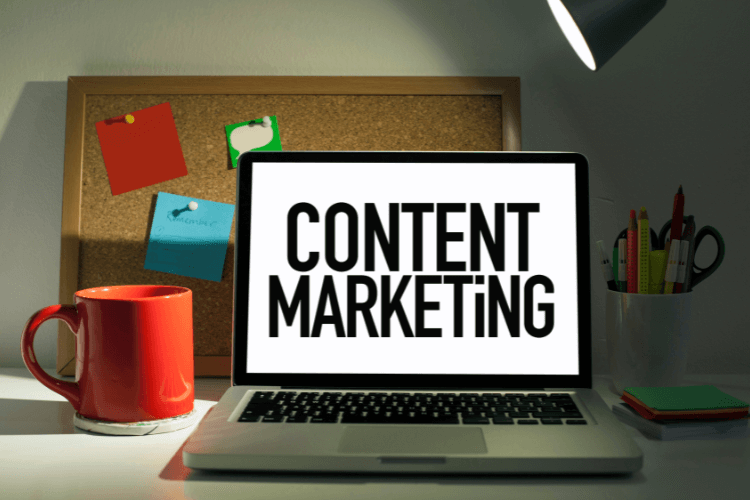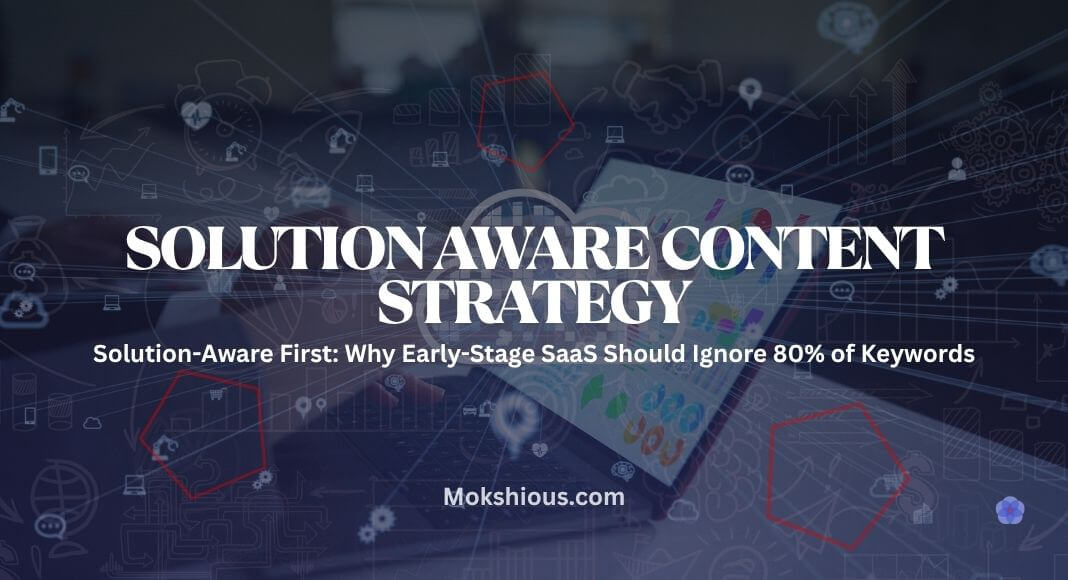The Traffic Trap: Why 80% of SaaS Blogs Fail to Convert

Chasing Keywords Instead of the Customer’s Journey
Here’s the thing. Most SaaS founders fall into the same trap: they go all-in on top-of-funnel SEO from day one. You’ll find them cranking out listicles like “10 Trends in SaaS” or “What Is Customer Retention?” hoping that traffic will magically convert into trials.
Why? Because blog content doesn’t always drive conversions. That kind of content targets the wrong stage of customer awareness. Early-stage SaaS SEO should focus on people actively looking for a solution, not passive readers.
Early Blogs Should Sell, Not Educate
In the MVP stage, your content strategy should focus on bottom-funnel content marketing. Don’t create content just to drive traffic. Create content that solves their problem and aligns with a high-intent content strategy. If your blog can’t contribute to moving someone closer to trying your product or service, you’re burning time.
Quick test: could this blog post reasonably lead to someone clicking a “Start Trial” button?
The 5 Stages of Awareness Funnel Model for SEO That Converts

Who Is Eugene Schwartz, and Why Should SaaS Founders Care?
Schwartz’s framework isn’t just a relic from 1960s copywriting. It’s become foundational for smart B2B SaaS marketing funnel strategies.
Here are the five stages of customer awareness:
- Unaware
- Problem aware
- Solution aware
- Product aware
- Most aware
Each level of awareness requires a different type of content. Early traction SaaS playbooks should double down on the solution-aware content strategy.
Why Solution Aware Is the Golden Stage for Early-Stage SaaS
People in the solution-aware stage know they have a problem. They’re searching for types of tools, categories, and services. They haven’t picked a product yet, and that’s your window.
They’re Googling things like:
- Best CRM for solo founders
- customer onboarding tools for SaaS
- Email automation platforms for fintech
These are high-intent searches. This is the CAC payback period SaaS content that matters.
Visual: Level of Awareness Journey Mapped to Blog Post Types
| Awareness Level | Example Post Title | Intent Score |
| Solution aware | Best Onboarding Tools for Fintech | High |
| Product aware | Userpilot vs Appcues: Which Wins? | Medium-High |
| Problem aware | Why Your Activation Rate Is Flatlining | Medium |
| Unaware | The Rise of SaaS in 2025 | Low |
CAC vs Content ROI: The Bottom-Funnel Conversion Math

The Harsh Truth: TOFU Content Delays Revenue
Top-of-funnel content might bring in traffic, but it rarely leads to SaaS customer acquisition content.
These readers are at the beginning of the customer journey. They’re not ready to convert, and that delays your CAC(Customer Acquisition Cost) payback period.
How “Best CRM for Freelancers” Outperformed “How to Grow a Biz”
| Metric | TOFU Blog | Solution-Aware Blog |
| Time to Rank | 3 months | 3 weeks |
| Leads per 1,000 visits | <1 | 7–10 |
This is where startup SEO prioritization becomes crucial.
CAC-to-Content ROI Calculator
Use our downloadable calculator to:
- Input CAC
- Input cost per blog
- Forecast CAC payback by content type
It’s part of our solution-aware content strategy toolkit.
How to Build Solution-Aware Content That Converts

Template 1 – “Alternative to” Pages
These are high-conversion, bottom-funnel content marketing assets.
Think:
- Alternative to Intercom for Startups
- CRM alternative pages for non-profits
Structure:
- Problem-first intro
- Quick comparison content strategy table
- CTA with demo/signup option
SEO tips:
- Use schema markup
- Add internal links to product pages and use-case content
Template 2 – “Best X for Y” Lists
Niche down to increase impact:
- Best CRM for agencies with <10 people
- Best onboarding tools for education SaaS
This format supports both solution-aware and product-aware searches.
Template 3 – Bottom-Funnel Use Case Blog Posts
These blogs speak directly to the job to be done:
- Email Automation for Customer Churn Prevention
- Tools to Reduce Activation Time in SaaS
They attract readers in the solution-aware stage of customer awareness.
Adding Emotion-Driven Testimonials to Bottom-Funnel Content

Why Testimonials Work Best with Solution-Aware Buyers
Buyers in this stage don’t just want options; they want validation. They’re comparing, scanning, and looking for social proof.
Adding testimonials, especially those tied to specific outcomes (like “reduced churn by 40% in 3 months”), can give just the push needed to convert.
Where to Place Testimonials for Maximum Impact
- Directly under feature comparisons
- Inside CTA sections
- Embedded in case study cards
These testimonials serve as micro-conversions that build trust.
Retargeting Strategy Based on Awareness Stages

Mapping Your Content Strategy to Paid Retargeting
Once your solution-aware content starts ranking, build a retargeting engine:
- Retarget blog visitors who hit “alternative to” or “best for X” posts
- Show them case studies, demo invites, or trial extensions
Why This Boosts Content ROI
Retargeting based on awareness-stage behavior tightens your funnel. You’re not just getting clicks, you’re re-engaging based on context.
What to Ignore Until You Hit 50–100 Customers Journey
Don’t Waste Time On:
- What is email marketing?
- Top 10 SaaS Trends in 2025
This kind of social media content or educational content might build brand awareness, but not early revenue.
When These Become Useful:
- Once product or service recognition grows
- When you’re retargeting using email marketing or outbound marketing
- As you scale your B2B content library
Proof: Micro SaaS Startups Using This Marketing Strategy

SparkToro
SparkToro, founded by Rand Fishkin, is a masterclass in bottom-of-funnel strategy SEO. Instead of launching with broad top-of-funnel blog posts or fluffy thought leadership, they prioritized solution-aware content from day one. One of their highest-performing blog posts? A direct comparison-style page titled “BuzzSumo alternative.”
This wasn’t just keyword hacking. It was strategically aimed at users who were already unhappy with BuzzSumo or looking for alternatives due to pricing or data limitations. By targeting that keyword and pairing it with a conversion-optimized landing page,
SparkToro quickly captured leads without waiting for long-term brand SEO to kick in.
The result? Organic signups within weeks of launch, and measurable MRR tied to high-intent traffic. It also fueled referrals from industry peers, who often shared these bottom-funnel pages as helpful resources.
Refiner.io
Refiner is a customer feedback tool built for SaaS teams, and its early SEO copywriting playbook was heavily centered around solution-aware blog content. Instead of chasing traffic-heavy posts like “How to collect user feedback,” they went all in on content like “Best customer feedback tools for B2B SaaS” and “Qualaroo vs Refiner.”
These posts weren’t just blog fillers. They were mini landing pages tailored to attract trial-ready traffic. Each one included:
- Feature comparison tables
- Clear CTAs to start a free trial
- Case studies and testimonials in the sidebar
As a result, Refiner not only ranked fast but also converted readers directly from these blog posts. This approach also shortened their CAC payback window, something critical for their bootstrapped growth strategy.
MicroConf Founder
Rob Walling, co-founder of MicroConf and veteran SaaS investor, has consistently advocated for the solution-aware-first strategy in his portfolio companies.
One early example was his work with Drip (before the acquisition), where he published targeted pages like “Mailchimp alternative for SaaS” and “Best email tools for bootstrapped startups.”
These weren’t just meant to drive clicks. They were part of a larger early traction SaaS playbook:
- Align content with real-time buyer pain points
- Use copywriting frameworks based on Eugene Schwartz’s five stages of awareness
- Measure CAC payback on a per-post basis
Rob has shared in multiple MicroConf talks that Drip’s fastest-growing traffic sources weren’t high-traffic blog posts, but long-tail, low-competition pages built around solution-aware search intent. This led to higher conversion rates and faster time-to-revenue than traditional SEO would’ve allowed.
SEO Tools for Finding High-Intent Solution-Aware Keywords
| Tool | Use Case |
| Ahrefs | Filter for commercial-intent terms like CRM alternative |
| Surfer SEO | Optimize content that provides semantic relevance |
| Clearscope | Match the level of awareness with search behavior |
| AlsoAsked | Find a solution to their problem queries |
| Ubersuggest | Discover SEO for MVP SaaS opportunities |
Objection Handling: “But Don’t I Need Traffic?”
The Big Reframe
Would you rather:
- 10,000 visitors and zero conversions?
- 100 visitors and five new signups?
The latter is the smarter SaaS content for conversions.
Common Stakeholder Pushback and Rebuttals
| Objection | Rebuttal |
| We need brand awareness first | We need customer revenue first |
| Let’s start with educational SEO | Let’s start with solution-aware blog posts |
When to Add Product-Aware and TOFU Marketing

Signs You’re Ready
- You’ve optimized for the bottom funnel
- Your CAC payback period SaaS metrics are healthy
- You’ve validated your early traction SaaS playbook
How to Scale Up b2b Content Tiers
- Add product-aware “vs” pages
- Start glossary-style TOFU
- Launch educational content through video or email marketing
Conclusion
If you’re at an early stage, ignore 80% of keywords. Build a strategy based on the five stages of awareness, especially solution awareness. Use bottom-funnel pages like CRM alternative pages and best tools for [use-case] lists to solve real customer problems.
This is the path to create content that helps, content that converts, and content to draws buyers to the right level of awareness.
